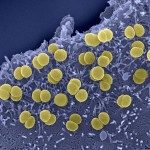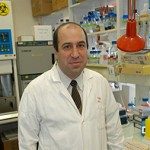Link to Pubmed [PMID] – 31100360
Link to DOI – S0163-4453(19)30151-310.1016/j.jinf.2019.05.007
J Infect 2019 07; 79(1): 7-14
Invasive infections due to Haemophilus influenzae are infrequent following the implementation of vaccination against H. influenzae of serotype b. However, their changing epidemiology may not be clear due to a lack of appropriate genotyping methods combined with antibiotic susceptibility analyses which do not discriminate invasive and non-invasive isolates. We aimed to describe recent epidemiological trends of invasive H. influenzae infections in France and explore the microbiological characteristics of invasive versus non-invasive isolates.All culture- and PCR-confirmed cases due to H. influenzae isolated from a sterile site, that were received at the French national reference centre for H. influenzae during the year 2017 (n = 138) were characterized by whole genome sequencing (WGS), serotyping and antibiotic susceptibility testing. We also included 100 isolates that were received from non-invasive infections.Most of the non-invasive isolates were non-typeable (99%) and this proportion was significantly less among invasive isolates 75%, p < 0.0001). Serotype f was the most frequently observed but serotypes b and a were also present among invasive isolates. WGS analysis suggested a serotype b to a capsule switching event. Non-typeable isolates showed extensive heterogeneity. Antibiotic susceptibility testing indicated that 24% of the invasive isolates were resistant to ampicillin but this percentage was significantly higher (51%, p < 0.001) among the non-invasive isolates. Moreover, the proportion of beta-lactamase negative ampicillin resistant isolates (BLNAR) was significantly higher among non-invasive isolates compared to that of invasive isolates (24% versus 7%, p < 0.001). BLNAR isolates were linked to modification in the ftsI gene encoding the penicillin binding protein 3 (PBP3). In particular, ftsI alleles that harboured the mutations D350N, S357N, M377I and S385T were resistant to ampicillin and third generation cephalosporins. These isolates were more frequent among non-invasive isolates.Our data suggest that invasive H. influenzae isolates differed phenotypically and genotypically from non-invasive isolates. The high proportion of ampicillin resistance by mutation in ftsI among non-invasive isolates may suggest a biological cost of these mutations on the function of PBP3 that can lead to lower bacterial invasiveness. WGS should be used routinely for the characterization of H. influenzae isolates in order to reliably follow the emergence, spread and mechanism of antibiotic resistance.

